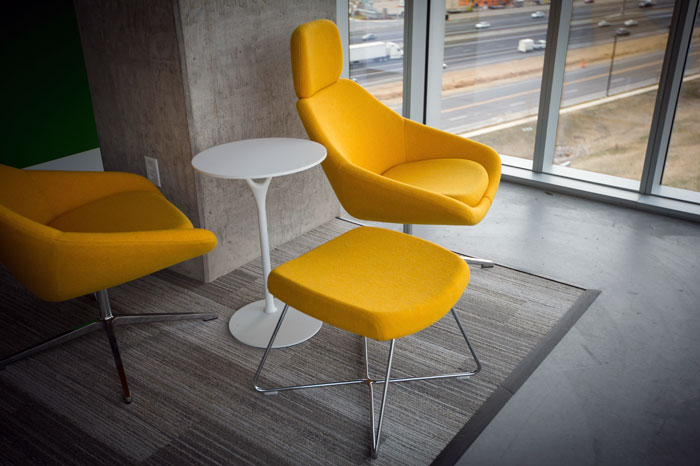Beyond Aesthetics
In 2024, exterior design in architecture embodies a synthesis of technological innovation, sustainability imperatives, aesthetic diversity, and contextual sensitivity. It reflects a dynamic interplay between form and function, driven by a deepened understanding of environmental impact and a heightened emphasis on user experience and community engagement. This era witnesses a departure from mere visual appeal towards a holistic approach that integrates advanced materials, smart technologies, and adaptive strategies to create resilient, sustainable, and visually compelling exteriors.
Technological Integration in Exterior Design
Technological advancements have revolutionized the way architects conceptualize and realize exterior designs in 2024. These innovations extend beyond aesthetics to encompass functionality, performance, and sustainability:
1. Parametric Design and Computational Tools**: Parametric design tools enable architects to generate complex geometries and intricate patterns based on algorithmic rules and parameters. Computational design algorithms facilitate iterative design processes that optimize performance metrics such as solar exposure, daylighting, and structural efficiency. This approach not only enhances design creativity but also ensures that exteriors are optimized for environmental conditions and energy efficiency.
2. Digital Fabrication and 3D Printing**: Digital fabrication technologies, including robotic manufacturing and 3D printing, enable architects to create custom-designed components and façade elements with precision and efficiency. These technologies facilitate the realization of innovative forms and textures that were previously challenging to achieve with traditional construction methods. Customizable façade systems, adaptive shading devices, and modular panels contribute to the aesthetic and functional versatility of exterior design.
3. Smart Materials and Responsive Envelopes**: The integration of smart materials and responsive façade systems enhances the performance and adaptability of building exteriors. Smart glass technologies adjust transparency and solar heat gain based on environmental conditions, improving energy efficiency and occupant comfort. Responsive façade elements, such as kinetic shading systems and active ventilation louvers, dynamically respond to changes in sunlight, temperature, and air quality, optimizing indoor environmental quality and reducing operational energy consumption.
4. Augmented Reality (AR) and Virtual Reality (VR)**: AR and VR technologies are increasingly used in the design and visualization of exterior spaces. Architects and clients can experience and interact with virtual models of buildings and urban environments, assessing design options and visualizing how exteriors will appear in different contexts and lighting conditions. These immersive technologies facilitate stakeholder engagement, design communication, and decision-making throughout the design process.
Sustainability and Environmental Responsiveness
In response to global environmental challenges, sustainability has become a fundamental consideration in exterior design in 2024. Architects are adopting strategies to minimize environmental impact, enhance resource efficiency, and promote resilience:
1. Green Facades and Living Systems**: Green facades and living walls integrate vegetation into building exteriors, providing thermal insulation, reducing urban heat island effects, and improving air quality through natural filtration. Vertical gardens and planted façades enhance biodiversity, mitigate stormwater runoff, and contribute to the aesthetic and ecological resilience of urban environments.
2. Passive Design Strategies**: Passive design principles, such as orientation, shading, natural ventilation, and thermal mass, optimize building exteriors for energy efficiency and occupant comfort. Exterior shading devices, such as brise-soleil and sunshades, mitigate solar heat gain and glare, reducing reliance on mechanical cooling systems and enhancing daylighting quality. High-performance building envelopes minimize heat loss and air leakage, supporting energy-efficient building operation throughout the year.
3. Renewable Energy Integration**: The integration of renewable energy technologies into building exteriors, such as photovoltaic (PV) panels and solar thermal systems, enhances energy autonomy and reduces reliance on fossil fuels. Solar façade systems and building-integrated PV modules generate clean electricity onsite, contributing to net-zero energy goals and mitigating greenhouse gas emissions associated with building operation.
4. Sustainable Materials and Lifecycle Assessment**: Architects prioritize the selection of sustainable materials with low embodied energy, recycled content, and recyclability for exterior applications. Durable and weather-resistant materials, including responsibly sourced timber, recycled metal cladding, and bio-based composites, enhance the longevity and environmental performance of building exteriors. Lifecycle assessment tools evaluate the environmental impacts of materials and construction processes, informing decision-making to minimize carbon footprint and resource depletion.
Aesthetic Diversity and Contextual Sensitivity
Exterior design in 2024 celebrates diversity in architectural expression while respecting local contexts, cultural identities, and historical narratives. Architects draw inspiration from regional traditions, urban landscapes, and natural surroundings to create visually distinctive exteriors that enrich the built environment:
1. Contextual Design and Urban Integration**: Architects design exteriors that harmonize with the urban fabric and cultural heritage of their surroundings. Contextual design principles consider scale, proportion, materiality, and architectural typologies to create cohesive streetscapes and enhance urban continuity. Adaptive reuse and façade restoration preserve historical facades and contribute to the cultural identity and sense of place within urban contexts.
2. Material Innovation and Texture Exploration**: The exploration of innovative materials and textures enables architects to create tactile and visually engaging exteriors. Facade materials such as perforated metal panels, textured glass, translucent membranes, and digital ceramic printing offer opportunities for artistic expression, light modulation, and spatial differentiation. Material experimentation and digital fabrication techniques encourage architects to push the boundaries of traditional construction methods and explore new possibilities in exterior design.
3. Color, Light, and Visual Dynamics**: Color psychology and lighting design play crucial roles in shaping the aesthetic quality and visual dynamics of building exteriors. Architects utilize color theory, light fixtures, and façade lighting strategies to create atmospheric effects, emphasize architectural features, and evoke emotional responses in building occupants and passersby. Dynamic lighting installations and interactive façade displays enhance nighttime visibility, cultural expression, and community engagement in urban environments.
Resilient Design and Adaptive Strategies
In an era characterized by climate uncertainty and environmental volatility, resilient design strategies ensure that building exteriors can withstand and adapt to evolving climatic conditions and natural hazards:
1. Climate-Responsive Façade Design**: Architects design climate-responsive façade systems that optimize thermal comfort, daylight penetration, and natural ventilation in response to seasonal variations and weather patterns. Advanced modeling tools simulate solar exposure, wind patterns, and environmental performance metrics to inform façade design decisions and enhance building resilience.
2. Weatherproofing and Durability**: Building exteriors are engineered with weatherproofing materials and construction techniques to withstand harsh climatic conditions, temperature fluctuations, and moisture ingress. Waterproof membranes, durable cladding systems, and corrosion-resistant finishes protect building envelopes from degradation and ensure long-term structural integrity.
3. Adaptive Facade Technologies**: Adaptive façade technologies, including movable louvers, pneumatic membranes, and phase-change materials, provide flexible solutions for climate control and energy management. These technologies enable building exteriors to adapt dynamically to changing environmental conditions, optimizing energy efficiency, and enhancing occupant comfort throughout the year.
4. Emergency Preparedness and Disaster Resilience**: Architects incorporate disaster resilience measures, such as flood-resistant barriers, seismic bracing systems, and fire-resistant materials, into exterior design strategies. Emergency evacuation routes, accessible emergency exits, and resilient building envelopes enhance occupant safety and mitigate risks during natural disasters and emergencies.
Future Directions and Emerging Trends
Looking ahead, exterior design in architecture is poised to evolve further with advancements in technology, materials science, and urban planning. Emerging trends and future directions include:
1. Biophilic Design Integration**: The integration of biophilic design principles into building exteriors enhances human-nature connections, promotes biodiversity, and supports ecological resilience in urban environments. Green roofs, vertical gardens, and urban agriculture initiatives contribute to sustainable urban development and enhance the aesthetic and functional diversity of building exteriors.
2. Interactive and Smart Environments**: The development of interactive façade systems and smart environments transforms building exteriors into responsive, interactive interfaces that engage with users, respond to environmental stimuli, and adapt to user preferences. Interactive media façades, kinetic installations, and digital signage technologies enhance urban connectivity, cultural expression, and community engagement in public spaces.
3. Circular Economy and Sustainable Practices**: Architects embrace circular economy principles and sustainable practices in exterior design, promoting the reuse, recycling, and repurposing of building materials and components. Prefabricated modular systems, demountable façade assemblies, and cradle-to-cradle design strategies minimize waste generation and resource consumption throughout the building lifecycle.
4. Climate-Positive Architecture**: Architects aspire to achieve climate-positive architecture by designing exteriors that generate renewable energy, sequester carbon emissions, and contribute positively to global climate mitigation efforts. Innovations in carbon-negative materials, carbon capture technologies, and regenerative design principles facilitate the transition towards climate-positive building practices.
Conclusion
Exterior design in architecture in 2024 represents a convergence of technological innovation, sustainability imperatives, aesthetic diversity, and contextual sensitivity. Architects leverage advanced computational tools, digital fabrication technologies, and smart materials to create resilient, sustainable, and visually compelling building exteriors that enhance the quality of urban environments and enrich the human experience. By embracing interdisciplinary collaboration, environmental stewardship, and cultural appreciation, architects in 2024 are poised to shape a built environment that reflects the values of innovation, inclusivity, and resilience for future generations.









